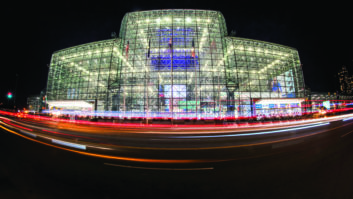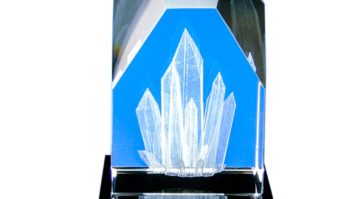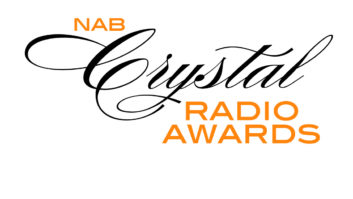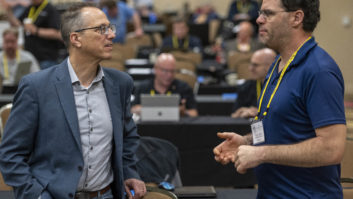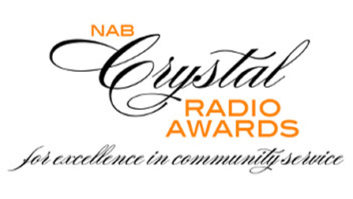
NAB Labs is moving forward on several new research projects to benefit the industry, said David Layer, senior director, advanced engineering with NAB’s science and technology department.
Layer led a session Thursday afternoon at the Radio Show to update broadcasters on the projects NAB Labs is currently engaged in.
Dan Ryson and Mike Rhodes of Cavell, Mertz and Associates worked with the NAB to construct a radio test bed that can currently be used to conduct studies of interference among three AM signal sources. By using two sources as “undesired” and the third as “desired,” the test bed can analyze how a variety of receivers behave in the presence of interference. Layer said the system, built in part with equipment retired from iBiquity test projects, is currently being used to study the prospects for all-digital AM radio, a subject that NAB Labs has been heavily involved in studying.
With almost half of all new cars being sold with HD Radio reception (both FM and AM) built in, Layer says the commercial prospects for all-digital AM are improving. That’s been a hard sell up until now, because the switch to all-digital AM requires a station owner to turn off its analog signal, effectively taking it off the air from the point of view of an analog radio owner.
“Today, that’s not too practical, but there may come a point in the future when that’s not true,” Layer said. “The all-digital system is a significant improvement over the hybrid service.” Of nearly 5,000 AM stations in the United States, fewer than 200 now run the hybrid HD Radio digital system, which has been criticized for poor coverage and interference to and from adjacent-channel analog signals.
Field tests in 2014 used nine AM stations of various power levels and directionality, borrowing signals briefly from NAB member stations to test with both all-digital and hybrid operation at locations that included Minneapolis, Seattle, Tucson and North Carolina both day and night.
“What we found was that the coverage was much better than it was with hybrid. The signal was much more robust. Hybrid would blend with analog when you went under a bridge, but all-digital didn’t have those problems,” Layer said. At night, he added, the all-digital service still faced many of the same interference issues that plague analog AM radio. Layer suggested that broadcasters might consider using all-digital service by day and switch to hybrid use at night.
Layer also said that testing also provided some useful experience in setting up the all-digital AM mode at the transmission end, since few stations or manufacturers had focused on that mode thus far. On the listener end, Layer said NAB Labs simply used consumer equipment in rental cars from Ford, Volvo, BMW and other manufacturers, since any HD Radio receiver that can hear hybrid AM digital can hear all-digital AM as well. Layer acknowledged that reaction from the industry to the all-digital tests has been “mixed,” but he said he’s hopeful that the results from the 2014 testing will prove useful for at least some broadcasters.
Another initiative that’s had greater uptake in the AM industry is the recent move to modulation-dependent carrier level (MDCL) technology, which reduces an AM station’s carrier power when audio is present. The use of MDCL, which the FCC approved within the last few years, can allow AM stations to save as much as 30% on power bills. “We didn’t know, though, how compatible MDCL will be with a hybrid digital system,” Layer notes. Working with NPR Labs, Layer says NAB Labs has now developed guidelines to show the effect that MDCL use has on AM HD coverage.
In the “static MDCL” mode, “there’s a minor impact on the IBOC coverage in some cases, but in some cases the IBOC coverage is actually better because the analog signal level is being reduced but the digital is staying constant, which improves the signal to noise ratio,” Layer said. In the dynamic MDCL approach, Layer said there was a reduction in IBOC coverage, as his team had expected. NAB Labs is now developing guidelines setting out static MDCL as the preferred standard when HD Radio is in use, as well as recommendations on how stations should implement MDCL usage.
The NAB Labs test bed is also being upgraded for FM capability. On that side of the spectrum, NAB Labs has been active in the push to get FM radio working in smartphones. Partnering with the NextRadio initiative, NAB Labs has been tearing down new phone models to determine which manufacturers have built in FM chip capability and which have not. Layer says there’s a critical mass now on the Android side of the smartphone world. “Eighty percent of the smartphones now sold that don’t have FM capability are iPhones,” he said.
Other projects NPR Labs is working on include a partnership with Emmis to develop FM radio in smartphone interfaces, a project with NPR Labs to test single-sideband FM, and a project with Nautel to help AM broadcasters create better systems for evaluating the quality of their HD Radio digital transmissions.
Layer said NAB Labs hopes to improve its connections with the industry. In addition to a robust social media presence and a growing presence at industry events including the NAB Show, the former “Tech Check” electronic newsletter has been replaced by the more interactive “Broadcast Blog.”
“We need everybody to come together and ensure the future of broadcasting,” Layer said.






